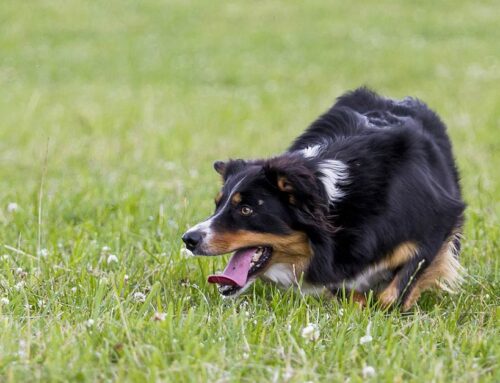 It has been over a decade since my fearful dog Sunny came to live with us from a rescue camp set up to help care for the animals impacted by Hurricanes Katrina and Rita. I met him at Camp Katrina where I went to volunteer several weeks after the hurricanes hit. As much as I thought I knew about dogs and dog behavior, training and how dogs learn, I soon came to understand it was a drop in the bucket compared to what I needed to know in order to help and train a scared dog.
It has been over a decade since my fearful dog Sunny came to live with us from a rescue camp set up to help care for the animals impacted by Hurricanes Katrina and Rita. I met him at Camp Katrina where I went to volunteer several weeks after the hurricanes hit. As much as I thought I knew about dogs and dog behavior, training and how dogs learn, I soon came to understand it was a drop in the bucket compared to what I needed to know in order to help and train a scared dog.
But I learned. It wasn’t always a smooth road and even today I realize how much more there is for me to understand about how behavior works and Applied Behavior Analysis, but there is no question in my mind about how to approach interacting with fearful dogs, including aggressive dogs.
The in a nutshell version is this-
- Keep the dog feeling safe. Do this however you need to for each dog. We want to see fearful reactions decrease or end. It may mean ceasing to talk to or interact with the dog beyond routine care. It may mean providing them with a safe haven where they can escape from whatever is scaring them on a daily basis.
- Change how they feel about the scary stuff by changing what it predicts. This is called counter conditioning. Usually we have the scary events become a reliable predictor for something yummy or fun. The scary thing does not have to be the source of the good stuff, only a predictor of it.
- Train the dog to do exactly what you need them to do using a high rate of positive reinforcement to build strong and reliable behavior. You can use a clicker if you like and know how, but you don’t need to. What you do need is to know what the dog values enough to change its behavior to get.
Common responses to these steps include;
But if the dog isn’t exposed to scary stuff how will they learn to deal with it?
This question is like asking, “If someone doesn’t keep almost drowning how will they learn to swim?” We can’t teach someone to swim if they’re too afraid to get into the pool! We start by eliminating the need for the dog to worry about bad things happening to them. From there we can teach them everything they need to know.
I tried counter conditioning and it didn’t work!
This is often an indication that the conditioning was not done properly. Unlike a laboratory where all the different objects and events in the environment can be controlled to a greater degree than we can in the real world, it can be tricky for the dog to isolate that it’s the thing we are trying to condition them to, that is responsible for the fabulous good stuff they are receiving. There are always lots of other things going on around a dog and each or any of them might have also been conditioned to previously. A dog who is afraid of men with hats and beards might also be conditioned to feel afraid when on the sidewalk where men with hats and beards have been encountered, or the smell coming out of the door of the hair salon at the spot where a scary man was last encountered.
My dog isn’t interested in food when scared.
Fear and anxiety impact a dog’s digestive system. It’s not unusual for them to not want to eat. See step 1.
I don’t want to use food.
Food is a primary reinforcer, as such it is among the easiest, most portable and salient things we can use to train. Use it. If your dog is motivated by toys and play, lucky you, use them.
What if I don’t have food.
If a dog has been trained to perform a behavior because food was provided as a consequence, and that has happened a lot, the behavior is usually strong enough to persist even if at some times we don’t have food. We can also condition other things to work as reinforcement as well. Don’t worry about it, a good trainer can show you how it’s done.
My mission is to help people living with or working with fearful dogs to have a better understanding about how to help them. My fearfuldogs.com website has lots of information and resources. If you need more help you can schedule a phone or skype consult. Webinars and seminars are also available. Before you let anyone handle or train your fearful dog make sure they know these important 3 steps.





